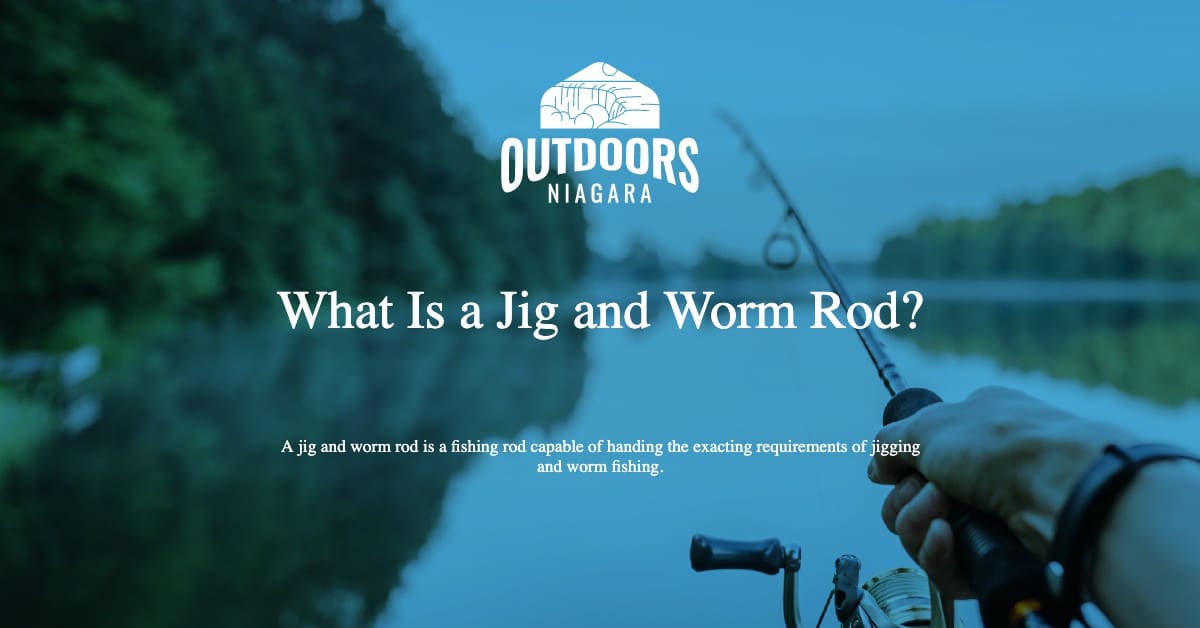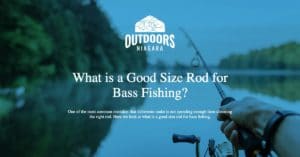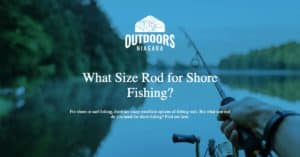A jig and worm rod is a fishing rod capable of handing the exacting requirements of jigging and worm fishing.
A worm, for the sake of this application, is a metal-headed hook onto which you apply a soft plastic worm structure.
Generally worm lures have larger hooks, such as 1/0, though not always.
We see worms fished in many applications such as saltwater, inshore fishing, lake fishing and deeper pool fishing in rivers, and pond fishing. They are ideal for slow water and you fish them either horizontally or vertically.
Jigs come in a variety of styles. They have a heavy metal, usually lead head which is attached to a hook.
A soft plastic or hard body is threaded over the hook giving the pieces of the jig the look of aquatic creatures.
These include soft bodied worms, naiads, minnows, and crustaceans – to name a few. Hard bodied jibs often mimic small fish, frogs, and small mammals.
A jig is fished in a rapid up-down motion and a jig rod has fast action so that the tip of the rod can bend and adjust to the rhythm of jigging.
Jigs are very popular ways of attracting predatory fish attracted by movement to strike.
They work well in freshwater and saltwater and can catch small bluegill or massive marlin.
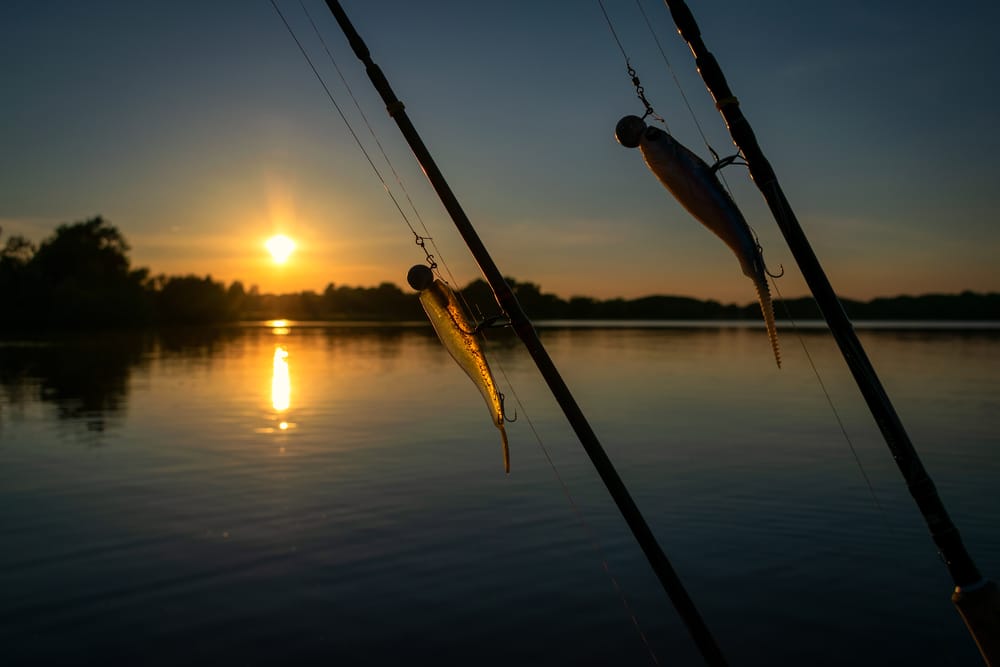
Contents
What length and action for jig and worm rod?
Big fish, saltwater jigging uses short rods in the 6 foot and under range.
A good rod to start with is one that is between 5.0-5.2 feet long. Medium heavy to heavy action is ideal for handling big fish such as tuna.
The jigging action for big targets in saltwater is generally vertical but surface lures and worms can also be fished in a horizontal method for surface strikes.
In shore jig fishing is a little different. You are likely to use a worm or horizontal jig that you pull horizontally through the water rather than up and down the water column.
The inshore jig uses a longer rod with medium power – 7.0 being a good length and a fast action tip.
The fast tip allows you to feel the jig bob along the bottom and through the water. It also helps you determine when to set the hook.
If you plan to do a lot of shallow water jigging – up and down method, you want a longer rod – 7.0 is a good length, but you can go as short as 6.0 feet and as long as 7.6 feet.
When equipped with a fast action tip and medium light power, you have a rod that will handle both jigging and jigging with worms, and one that will cast fairly accurate.
You can jig with a worm in any of these situations.
So to answer the question about rod length for both jigging and worm fishing, the answer is it depends.
If you are setting up a jig and worm rod for inshore or for fishing from the pier, go with a 7.0 foot rod with medium power and fast action.
You can upgrade to shorter or longer and change the power to medium heavy for saltwater and medium light for pier fishing. The fast action tip remains the same.
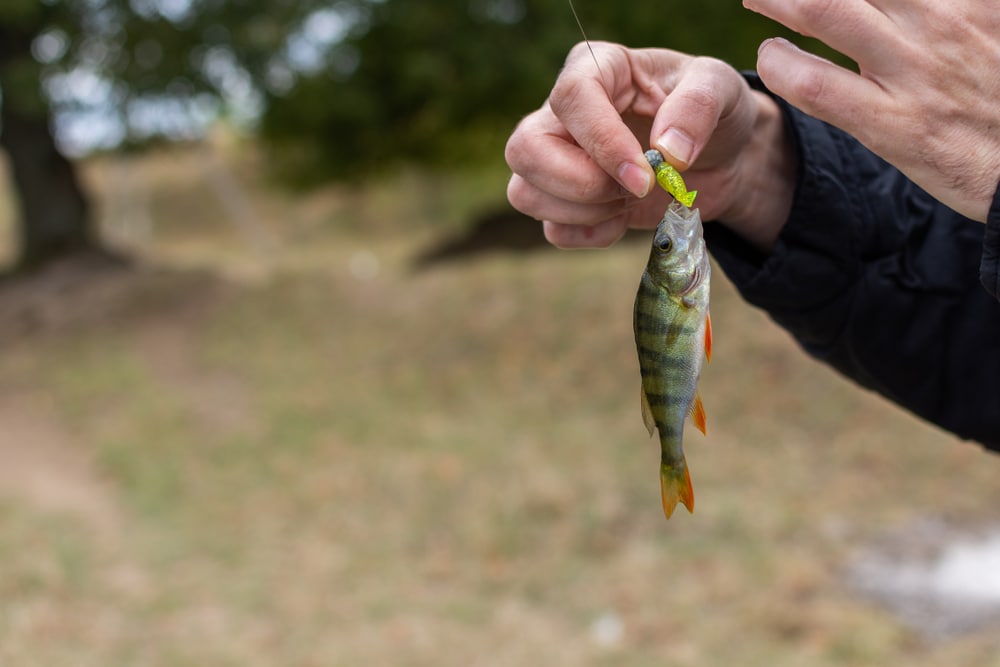
What makes a jig-and-worm rod so good for both?
Jig and worm fishing means you are essentially jigging with a lure rather than a jig.
For most of us that means distance casting and jigging the worm in with short jigs on the line.
This set up is amazing for freshwater species such as smallmouth bass, largemouth bass, trout, and pike.
You can also entice bluegill and crappie to strike a worm as a jig.
For saltwater fishing you can do a lot of damage with a worm and a jigging action.
Species such as reds, bonefish, sea bass, sea trout, and even some bigger cobia will hit a worm on a jig setting.
Mostly you are fishing inshore or from shore in these scenarios and a 7.0 foot rood with medium heavy action and a fast tip is a good bet.
You can adjust the rod length down if targeting bigger fish and keep the power at medium-heavy or heavy (for big fish) but the fast action tip is a constant factor.
Personally, ultra-fast action tips are overkill for jigging with a worm.
The length of the rod is ideal between 6.0 feet and 7.6 feet.
The power of the rod can range from Medium-light (pier fishing) to medium-heavy for surf fishing and inshore fishing, to heavy for deep sea fishing.
The action of the rod should always be fast action as you want the rods tip to return quickly to its neutral position when jigging.
Worm and jig rod advice
Jigging is one of the fastest-growing options for fishing in both saltwater and freshwater.
Good advice includes:
- Setting up a jig and worm rod for the fishing situation you plan to fish most often. – Pier – freshwater/inshore – deep saltwater.
- Choose the best reel and specifically look at the smoothness of the reel. A standard reel will do okay, but one that has smooth movements will be better. When shopping for a jig and worm reel, the distance casting units are sometimes awesome. They hold more line, including braided line, and they usually have smooth movements.
- Stick with Fast action tips – The ultra-fast tips are overkill and can be more expensive.
- Learn to tie a non-slip loop knot with your eyes closed. This is one of the best knots for tying worms and jigs on your leader.
- Learn to tie a double uni knot with your eyes closed. The double uni know is ideal for connecting braided line to mono or fluorocarbon leaders.
What to look for?
What do you look for when picking out a jig rod for worm? This short guide should help you find a rod that fits your jig fishing style.
Length – Longer is better for jig fishing. You want a jig rod that is at least 7 feet in length.
Longer rods work well for jigging because they are generally more flexible than are shorter rods. A seven-foot rod is ideal. You can go longer to eight feet, but seven is ideal.
Power – is the rating of how much force it takes to bend the rod. It kind of relates to fish size, but there are other factors involved.
For bigger fish, such as tuna or marlin, you want a rod with a lot of backbone.
A graphite rode with heavy power or slow power is ideal.
Heavy power means that it takes more energy to cause the rod to bend.
Power is different from action because action tells us where the rod will bend when power is applied.
Sometimes the power rating of a rod is given as fast or slow, which can be confusing because the action rating of a rod is also listed as fast or slow.
A slow power rod is slower to bend and slower to return to a straightness. For jigging for big fish you want a heavy power or slow power rod.
For medium fish a medium power rating is good. For smaller fish, such as bluegill, you can get away with a light power rod.
Action – Jigging requires that the tip of the rod move a lot and also that it return to a normal straight position quickly.
All jigging rods have a fast action rating. That means that just the tip of the rod is going to bend. More importantly it also means that the tip of the rod will snap back to a straight position quickly.
The action should be fast for all fish sizes. A fast action tip allows the line, pole and hook to correct itself during the jigging action.
Jigging action is a three-step process – tiny flick up, tiny flick up, longer flick up. You are moving the jig in a two inches up, two inches up, six inches up rhythm.
Slow, slow, fast, slow, slow fast.
Reels – Reels are important to jigging. They need to be smoother than a normal fishing reel.
The smooth action of a jigging reel means that the entire rhythm of jigging happens in time and with fewer issues.
Look for a gear ratio of 4:1 to 4:9 for reels.
These give you the accuracy of line retrieval with the fewest issues.
They will also handle battling fish of all sizes.

